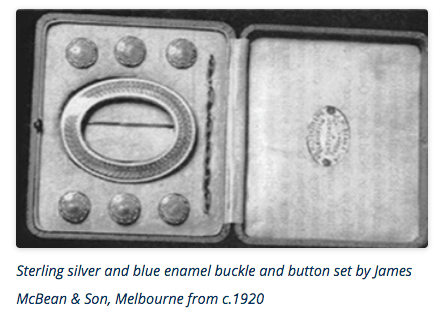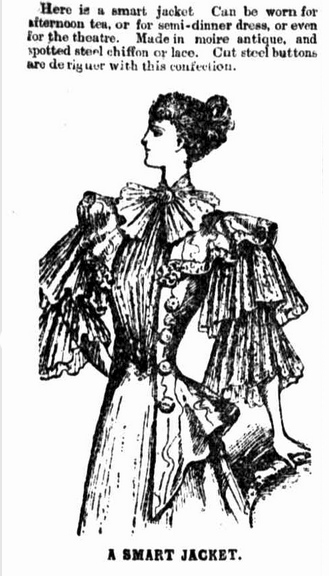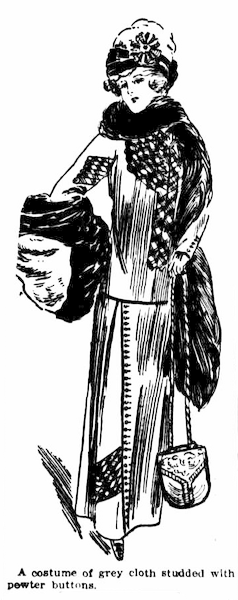Metal Buttons
As far as I know, the only metal buttons made in quantity in Australia were uniform buttons, made by die-sinkers, medal and badge makers such as Stokes and Sons, Amor, A. J. Parkes and Sheridan, etc. These buttons have been made of copper, brass, white metal*, anodised** aluminium, and they have been gilt and silver-plated. A smaller quantity of fashion buttons were made by jewellers in metals such as gold and silver. These were often given as gifts in boxed sets.

* White metal is a descriptive term that can include alloys of antimony, tin, lead, cadmium, bismuth, and zinc. In Stokes case, it was probably nickle-silver, as the company quoted using this for some of its buttons.
**Anodising is a process of using electricity to form a corrosion resistant outer layer that can allow colouring.
A bewildering list of metals/alloys have been used throughout history to make or decorate buttons with. Some passed out of favour quickly, as the quality of button produced was not high. These include:
- Aluminium. Used in Australia for uniform buttons from 1953.
- Biddery. Used in India. An alloy of copper, zinc, lead and sometimes tin. Like pewter in appearance.
- Brass. An alloy of copper and zinc.
- Britannia. An alloy of tin and antimony used in the 18th century in Britain. Similar in appearance to hard pewter.
- Copper.
- Gold. Most commonly as a plating (gilding).
- Iron. Usually painted, lacquered or tinned.
- Pinchbeck. Used in the 19th century. An alloy of copper and zinc used as a cheap gold substitute.
- Pewter. An alloy of tin, antimony, bismuth, copper, sometimes silver, and in the past, lead. It was in common use in the late 17th to 18th centuries until replaced for the most part by the use of brass.
- Plumbago. An alloy containing mostly lead. Used in the late 19th to early 20th century.
- Semilor. Used in the 19th century, as a cheap gold substitute. A yellowish alloy of zinc and copper.
- Silver. Solid or as a coating.
- Steel. Iron with a small proportion of carbon.
- Tin. Mostly used as a coating to prevent rusting, also for decoration (e.g. ‘crystallised’ tin).
- Tombac. Used in the 18th century. An alloy of copper and zinc with a soft grey-white-yellow gleam.
- Zinc. Mostly used in alloys, but has been used for button making as rolled or sheet zinc with a protective coating against corrosion, also as rims or liners on buttons.
-

The Telegraph (Brisbane), 21st July 1894 page 7.

Crookwell Gazette (NSW), 16th May 1911 page 4.

The World’s News (Sydney), 19th July 1933 page 2.
